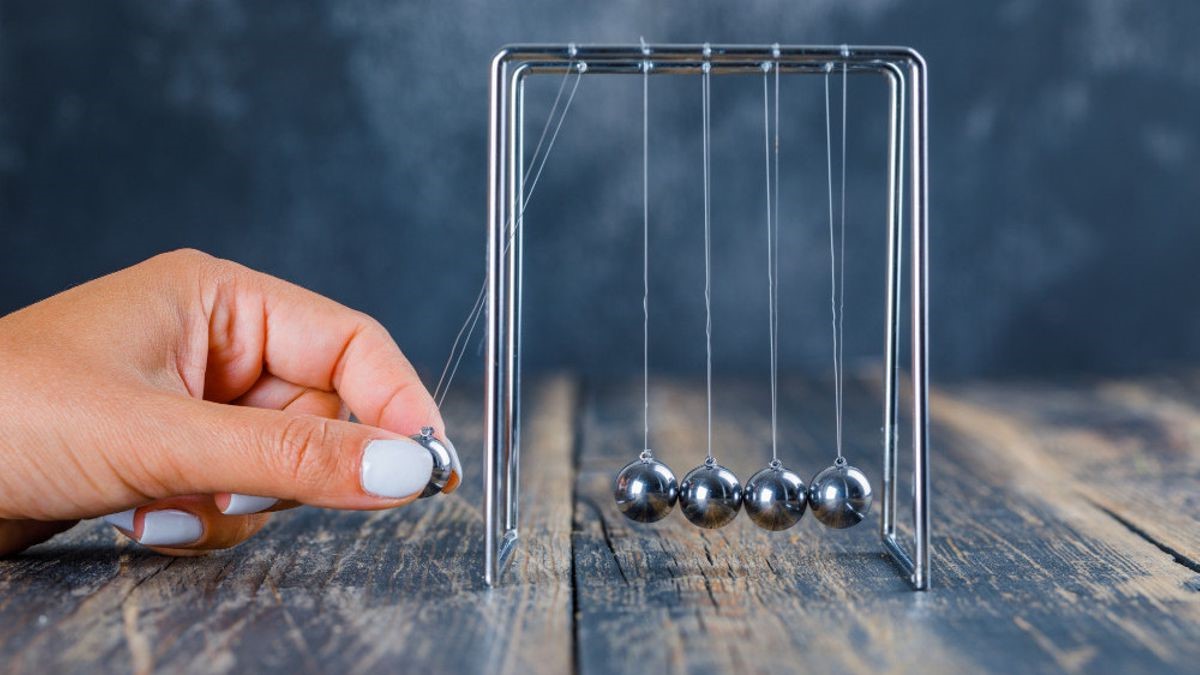
Ever wondered how your bicycle moves or why windmills spin? Well, you're about to find out! Mechanical energy is everywhere, from the smallest watch gears to massive roller coasters, making our world move in fascinating ways. Mechanical energy is the sum of kinetic and potential energy in an object that's moving or has the potential to move. This concept might sound a bit dry, but trust me, it's anything but! With these 15 best mechanical energy facts, you'll see the unseen forces that shape our daily lives. Ready to get your mind blown by how cool science can be? Let's dive into the world of mechanical energy and uncover some of its most intriguing secrets.
Key Takeaways:
- Mechanical energy is the combination of potential and kinetic energy in a system. It powers everyday movements and work, from wind turbines generating electricity to the thrill of a roller coaster ride.
- Objects gain mechanical energy through force, and it's everywhere around us. From the sound of rustling leaves to the propulsion of hybrid vehicles, mechanical energy shapes our world and holds potential for future innovations.
What is Mechanical Energy?
Mechanical energy is the sum of potential energy and kinetic energy present in the components of a mechanical system. This type of energy is everywhere around us, powering movements and facilitating work in both natural and engineered systems. From the water flowing over a dam to the gears turning in a clock, mechanical energy is an essential part of daily life.
- Mechanical energy is conserved in a system where no external forces cause energy loss, such as friction or air resistance. This principle is known as the conservation of mechanical energy.
How Do Objects Obtain Mechanical Energy?
Objects gain mechanical energy through the application of force, which can come from various sources. For instance, when you stretch a rubber band, you're storing potential energy in it. Release the band, and that stored energy converts into kinetic energy as it snaps back to its original shape.
- The amount of mechanical energy an object has depends on its mass and velocity, as well as its position relative to other forces acting upon it, like gravity.
Examples of Mechanical Energy in Everyday Life
Mechanical energy is not just a concept found in physics textbooks; it's part of our everyday experiences. Here are a few examples:
- Wind turbines convert kinetic energy from wind into electrical energy, showcasing mechanical energy at work on a large scale.
- A roller coaster at its highest point has maximum potential energy, which transforms into kinetic energy as it descends.
- Clocks, especially pendulum clocks, operate by converting potential energy into kinetic energy and back, keeping time through mechanical energy.
Mechanical Energy in Natural Phenomena
Nature is a vast playground for mechanical energy, demonstrating its principles in various phenomena.
- Waterfalls are a powerful display of mechanical energy, where water gains kinetic energy as it falls and potential energy when it's at the top.
- Trees convert mechanical energy into sound energy when wind causes their branches and leaves to rustle.
The Role of Mechanical Energy in Technology
Advancements in technology often harness mechanical energy in innovative ways, improving efficiency and creating new possibilities.
- Hybrid vehicles use mechanical energy for propulsion, combining it with electrical energy for better fuel efficiency.
- Windmills, ancestors of modern wind turbines, have been using mechanical energy to grind grain and pump water for centuries.
Mechanical Energy in Sports
Sports offer clear examples of mechanical energy in action, where human bodies and equipment work together to achieve impressive feats.
- In archery, the bow stores mechanical energy when drawn, which is then transferred to the arrow as kinetic energy upon release.
- Gymnasts use the mechanical energy stored in springboards to propel themselves into the air, performing flips and twists.
Conservation of Mechanical Energy
The conservation of mechanical energy principle is a cornerstone in physics, providing a foundation for understanding how energy transfers and transforms.
- In an ideal pendulum, mechanical energy is conserved between potential and kinetic energy, demonstrating energy's ability to change forms without being lost.
Challenges with Mechanical Energy
While mechanical energy is incredibly useful, there are challenges in harnessing and conserving it efficiently.
- Friction is a major factor that leads to the loss of mechanical energy in moving parts, requiring additional energy to maintain motion.
- Air resistance also plays a role in reducing the efficiency of objects moving at high speeds, such as vehicles and aircraft.
Future of Mechanical Energy
Looking ahead, the potential for innovations in how we use and conserve mechanical energy is vast.
- Research into materials that reduce friction and air resistance could lead to more efficient transportation methods, saving energy and reducing emissions.
Mechanical energy remains a fundamental concept in physics, deeply integrated into the fabric of our universe. Its principles guide the design of machines, the structure of natural processes, and the development of new technologies, making it a key player in shaping the future.
A Final Look at Mechanical Energy
We've journeyed through the fascinating world of mechanical energy, uncovering its secrets and seeing how it powers our universe. From the simple act of throwing a ball to the complex mechanisms driving our machines, mechanical energy is everywhere. It's in the wind that turns turbines, the water that flows through dams, and even in our own movements. This exploration has shown us not just how mechanical energy works, but also its importance in innovation and sustainability. As we move forward, harnessing this form of energy more efficiently could be key to solving some of our biggest challenges. Remember, every time you see something move, there's a story of mechanical energy behind it, making the world go round. Let's keep our curiosity alive and continue to explore the wonders of physics that illuminate our everyday lives.
Frequently Asked Questions
Was this page helpful?
Our commitment to delivering trustworthy and engaging content is at the heart of what we do. Each fact on our site is contributed by real users like you, bringing a wealth of diverse insights and information. To ensure the highest standards of accuracy and reliability, our dedicated editors meticulously review each submission. This process guarantees that the facts we share are not only fascinating but also credible. Trust in our commitment to quality and authenticity as you explore and learn with us.


